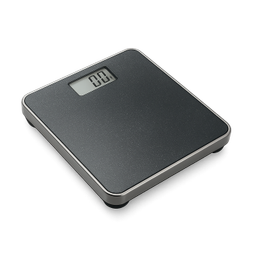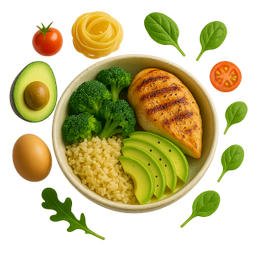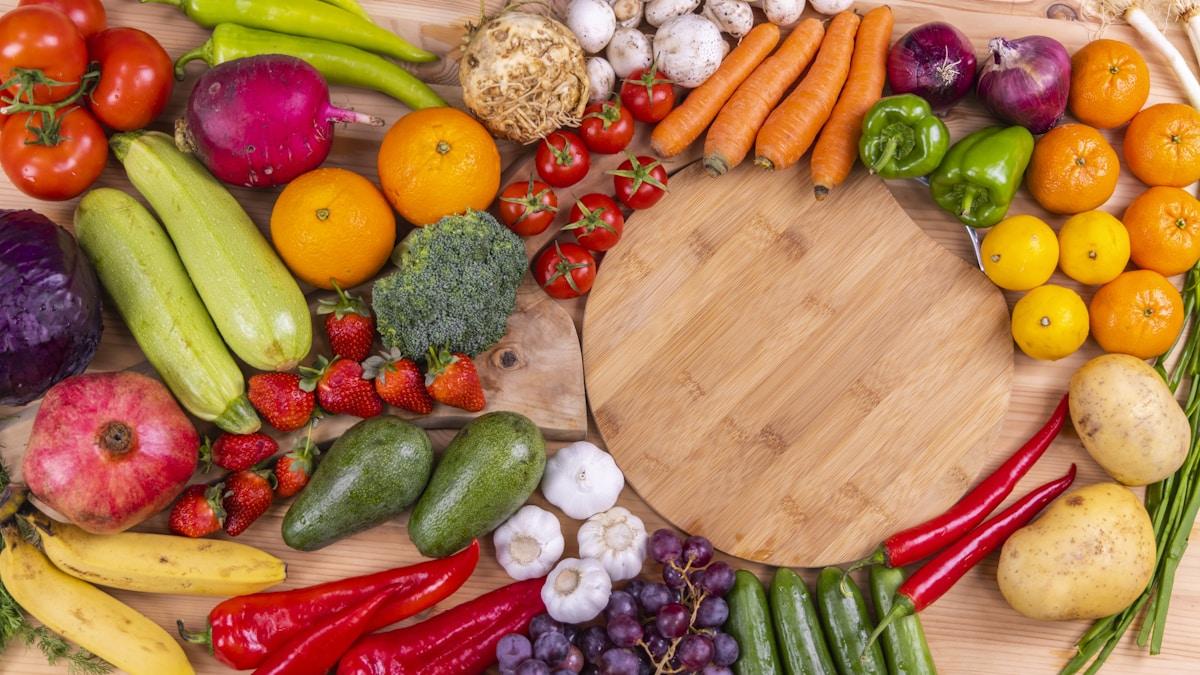
Healthy Fats vs. Unhealthy Fats: The Complete Guide to Omega-3s, Saturated Fats, and More
Learn which fats support your health and which to avoid. Complete guide to omega-3s, saturated fats, unsaturated fats, and trans fats with science-backed recommendations.
Verdu Team
The team behind Verdu, your AI-powered nutrition companion
If you've ever felt confused about fats in your diet, you're not alone. For decades, we were told that all fats were the enemy—leading to a boom in low-fat products that often replaced healthy fats with sugar and refined carbohydrates. Today, we know the truth: not all fats are created equal. Some fats are essential for your health, while others can increase your risk of chronic disease.
The key isn't avoiding fat altogether—it's understanding which fats to embrace and which to limit. In this comprehensive guide, we'll break down the science of dietary fats, explore the powerful benefits of omega-3s, and give you practical strategies to make healthier choices every day.
Understanding the Four Types of Dietary Fats
When it comes to dietary fats, there are four main categories you need to know:
- Monounsaturated fats (healthy)
- Polyunsaturated fats (healthy, includes omega-3s and omega-6s)
- Saturated fats (limit intake)
- Trans fats (avoid completely)
Here's what matters most: research from Harvard Health shows that the type of fat you eat is more important than the total amount of fat in your diet. Replacing unhealthy fats with healthy ones can reduce your risk of heart disease, improve cholesterol levels, and support overall wellness.

The Good: Unsaturated Fats
Unsaturated fats are the stars of a healthy diet. These fats come primarily from plant sources and fish, and they have powerful benefits for your cardiovascular system, brain health, and inflammation levels.
Monounsaturated Fats
Monounsaturated fats help reduce "bad" LDL cholesterol while maintaining "good" HDL cholesterol. According to the Harvard Nutrition Source, these fats can lower your risk of heart disease and stroke when they replace saturated and trans fats in your diet.
Best sources:
- Olive oil and olives
- Avocados and avocado oil
- Almonds, cashews, and other nuts
- Peanuts and peanut butter
- Sesame seeds
Polyunsaturated Fats
Polyunsaturated fats include two essential fatty acids your body cannot produce on its own: omega-3 and omega-6. These fats are crucial for brain function, cell growth, and reducing inflammation throughout your body.
Best sources:
- Fatty fish (salmon, mackerel, sardines, herring)
- Walnuts
- Flaxseeds and chia seeds
- Sunflower seeds
- Soybean and canola oil

The Star Player: Omega-3 Fatty Acids
Omega-3 fatty acids deserve special attention. These polyunsaturated fats are among the most studied nutrients in modern nutrition science, with compelling evidence for their wide-ranging health benefits.
Types of Omega-3s
There are three main types of omega-3 fatty acids, each with distinct sources and benefits:
1. EPA (Eicosapentaenoic Acid)
- Found primarily in fatty fish and seafood
- Powerful anti-inflammatory effects
- Supports heart and cardiovascular health
2. DHA (Docosahexaenoic Acid)
- Also found in fatty fish
- Critical for brain development and function
- Supports eye health and cognitive performance
3. ALA (Alpha-Linolenic Acid)
- Found in plant sources like flaxseeds, chia seeds, and walnuts
- Your body can convert small amounts of ALA to EPA and DHA, but the conversion rate is limited
- Still beneficial as part of a balanced diet
Health Benefits of Omega-3s
The American Heart Association recommends eating fish (particularly fatty fish) at least two times per week due to omega-3s' cardiovascular benefits. Research shows omega-3 fatty acids can:
- Lower triglycerides by 15-30%
- Reduce blood pressure in people with hypertension
- Decrease inflammation throughout the body
- Support brain health and may reduce risk of cognitive decline
- Improve mood and may help with depression symptoms
How Much Omega-3 Do You Need?
While there's no official recommended daily intake for omega-3s, most health organizations suggest 250-500mg of combined EPA and DHA per day for healthy adults. For perspective, a 3.5-ounce (100g) serving of wild salmon provides approximately 2,150mg of EPA and DHA combined—well above the daily recommendation.
Top Omega-3 Food Sources (EPA/DHA content per 3.5 oz/100g):
- Salmon: 2,150mg
- Mackerel: 2,670mg
- Sardines: 1,480mg
- Anchovies: 1,040mg
- Herring: 1,730mg

The Bad: Trans Fats
If there's one type of fat to avoid completely, it's trans fats. According to Harvard Health, trans fats have "no known health benefits" and there is "no safe level of consumption."
What Are Trans Fats?
Trans fats are created through an industrial process that adds hydrogen to liquid vegetable oils, making them solid at room temperature. This process, called partial hydrogenation, was once common in margarine, shortening, and many processed foods to extend shelf life and improve texture.
Why Are Trans Fats So Harmful?
Trans fats are uniquely dangerous because they:
- Raise "bad" LDL cholesterol more than any other type of fat
- Lower "good" HDL cholesterol simultaneously
- Increase inflammation throughout your body
- Raise your risk of heart disease, stroke, and type 2 diabetes
The good news? In 2018, the FDA banned partially hydrogenated oils (the primary dietary source of artificial trans fats) from the U.S. food supply. However, small amounts may still exist in some processed foods.
How to Avoid Trans Fats
- Read ingredient lists carefully—look for "partially hydrogenated oil" and avoid those products
- Limit fried foods from restaurants, as some still use oils containing trans fats
- Choose whole, unprocessed foods whenever possible
- Check nutrition labels—if a product lists 0g trans fat but contains partially hydrogenated oil, it may have up to 0.5g per serving
The In-Between: Saturated Fats
Saturated fats sit in a gray area. While not as harmful as trans fats, they can negatively impact your health when consumed in excess. The 2020-2025 Dietary Guidelines for Americans recommend limiting saturated fat to less than 10% of your total daily calories.
For someone eating 2,000 calories per day, that's about 22 grams of saturated fat maximum.
Sources of Saturated Fats
Saturated fats are found primarily in animal products and some tropical oils:
- Red meat (beef, pork, lamb)
- Full-fat dairy (butter, cheese, cream, whole milk)
- Poultry skin
- Coconut oil and palm oil
- Baked goods and fried foods made with these fats
The Current Science
Research on saturated fats continues to evolve. While earlier studies suggested all saturated fat was harmful, more recent evidence shows a more nuanced picture. The Harvard Nutrition Source emphasizes that what you replace saturated fat with matters just as much as reducing it.
The key insight: Replacing saturated fats with refined carbohydrates (like white bread and sugary foods) doesn't improve health outcomes. But replacing saturated fats with polyunsaturated fats from fish, nuts, and healthy oils can reduce your risk of heart disease.

Practical Strategies for Choosing Healthy Fats
Understanding fat types is one thing—actually applying this knowledge in your daily life is another. Here are actionable strategies to help you make healthier fat choices without feeling deprived.
Simple Swaps for Better Fat Quality
Instead of this → Try this
- Butter on vegetables → Extra virgin olive oil
- Chips and crackers → Raw almonds or walnuts
- Fried chicken → Grilled salmon or baked chicken breast
- Full-fat dairy → Low-fat or Greek yogurt with nuts for healthy fats
- Creamy salad dressings → Olive oil and vinegar-based dressings
- Red meat several times per week → Fish twice per week, beans and legumes other days
Reading Nutrition Labels Like a Pro
When shopping for packaged foods, check both the nutrition facts panel and the ingredient list:
- Look at saturated fat content and choose products with lower amounts
- Check for trans fats (0g is the goal)
- Scan the ingredients list for "partially hydrogenated oils"—if present, put it back
- Compare products within the same category to find healthier options
Tracking Your Fat Intake the Smart Way
Manually tracking different types of fats across all your meals can feel overwhelming and time-consuming. You'd need to look up every ingredient, calculate percentages, and ensure you're staying within recommended limits for saturated fats while getting enough omega-3s.
This is where Verdu's AI-powered meal analysis becomes incredibly valuable. Simply snap a photo of your meal, and Verdu instantly breaks down your fat intake—showing you the balance of healthy unsaturated fats, saturated fats, and total fat content. No manual calculations, no guesswork. You'll know immediately whether your meal aligns with your health goals, making it easy to make adjustments throughout the day.
Bringing It All Together: Your Healthy Fats Action Plan
Now that you understand the different types of fats, here's your simple action plan:
✅ Embrace These Fats Daily:
- Extra virgin olive oil for cooking and dressings
- Avocados as a snack or in salads
- A small handful of nuts (almonds, walnuts, pecans)
- Fatty fish at least twice per week
- Ground flaxseeds or chia seeds in smoothies or oatmeal
⚠️ Limit These Fats:
- Red meat to 1-2 times per week
- Full-fat dairy products
- Butter and other animal fats
- Coconut oil (despite health claims, it's still high in saturated fat)
🚫 Avoid Completely:
- Any foods containing partially hydrogenated oils
- Deep-fried fast food
- Commercially baked goods with trans fats
- Margarine and shortening with trans fats
The Bottom Line on Dietary Fats
Fats are not your enemy—they're an essential part of a healthy diet that supports your brain, heart, hormones, and overall wellbeing. The secret is choosing the right types of fats and consuming them in appropriate amounts.
By focusing on unsaturated fats from sources like olive oil, nuts, avocados, and fatty fish—while limiting saturated fats and avoiding trans fats entirely—you'll be well on your way to optimizing your nutrition for long-term health.
Start Making Smarter Fat Choices Today
You don't need to become a nutrition expert or spend hours analyzing every meal. Verdu makes it effortless to understand what you're eating and whether it aligns with your goals. Get instant insights on your fat intake, personalized recommendations, and the confidence that you're nourishing your body with the right types of fats.
Download Verdu and take the guesswork out of healthy eating:
This article is for educational purposes only and is not a substitute for professional medical advice. Always consult with a healthcare provider or registered dietitian before making significant changes to your diet, especially if you have existing health conditions.
Related Articles

Mediterranean Diet 101: Why Nutritionists Call It the Gold Standard
Discover why the Mediterranean diet is ranked #1 by health experts. Learn the science-backed benefits, core principles, and practical tips to start eating Mediterranean style today.

How to Read Nutrition Labels Like a Dietitian: Decode Food Packaging in 60 Seconds
Learn the dietitian-approved method to decode nutrition labels in under 60 seconds. Discover what to look for, what to avoid, and how to make smarter grocery choices.

Understanding Micronutrients: The Essential Vitamins and Minerals Your Body Needs Daily
Complete guide to essential vitamins and minerals: what they do, how much you need, and the best food sources to meet your daily micronutrient requirements.